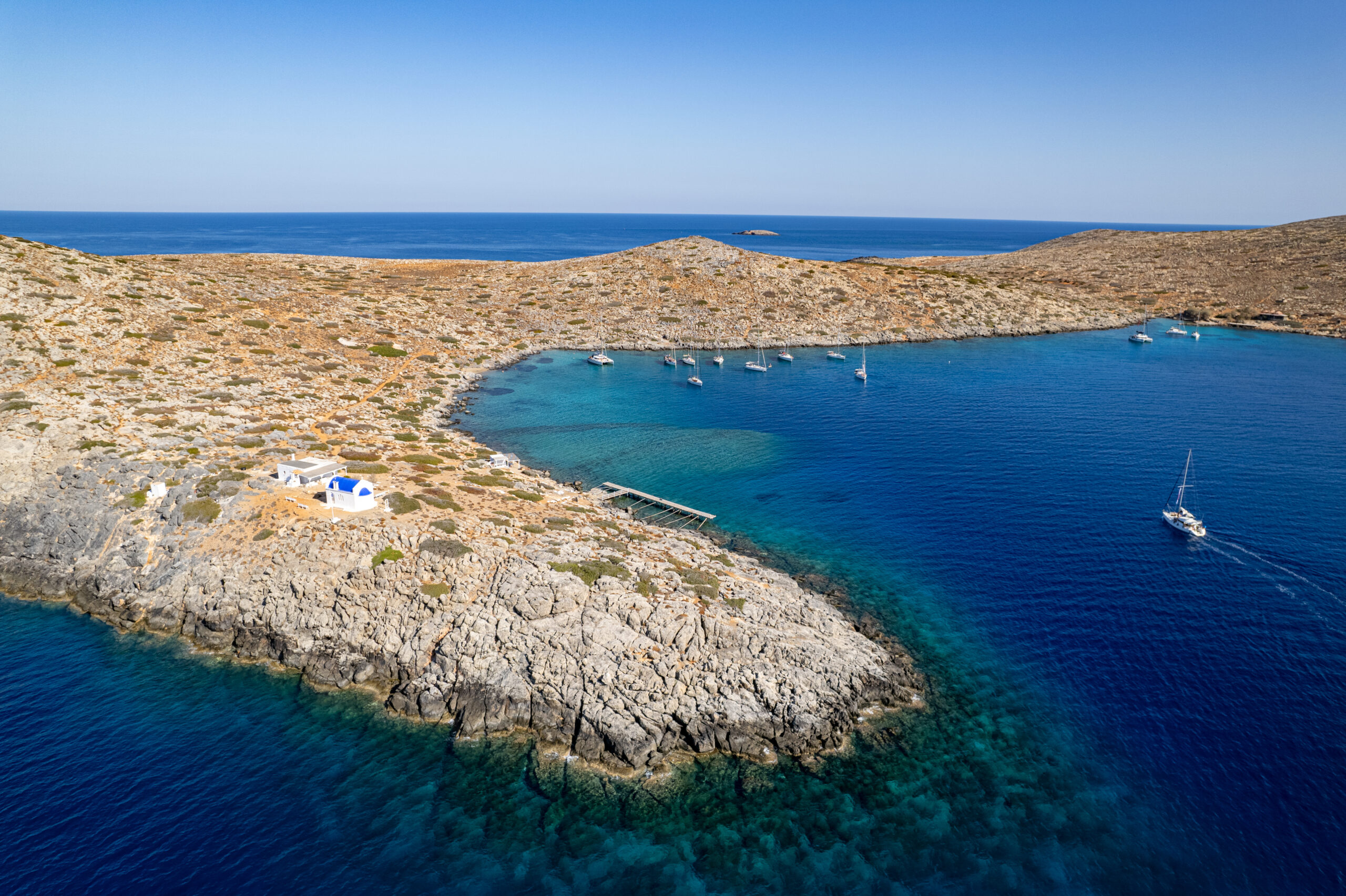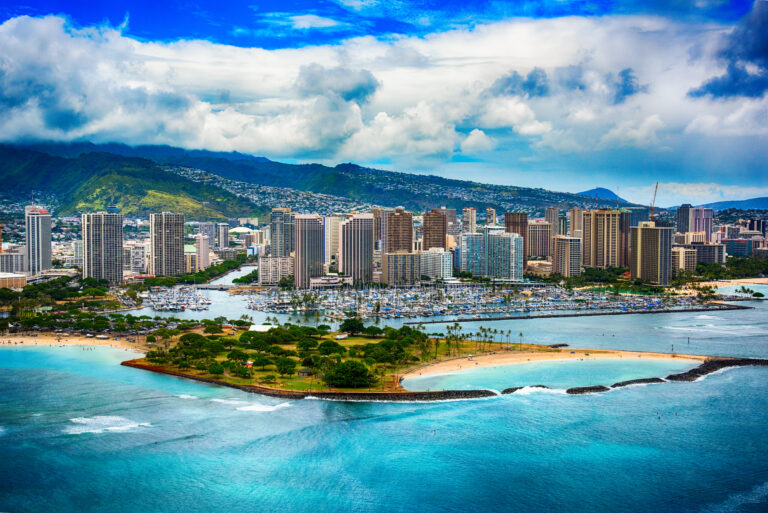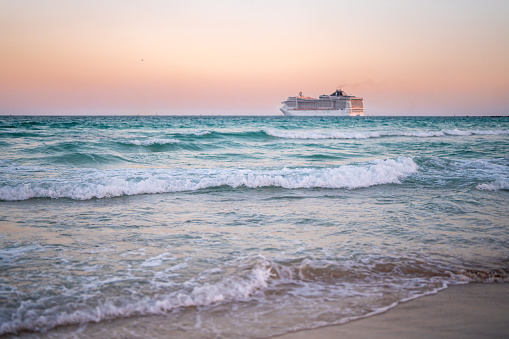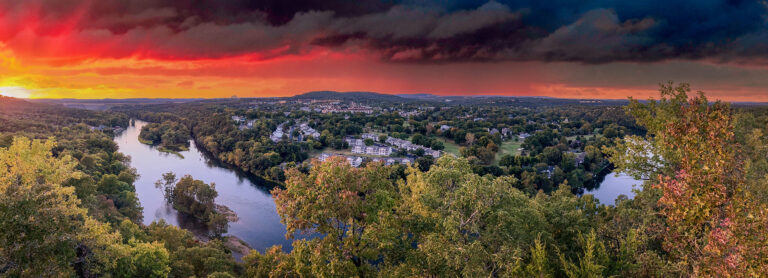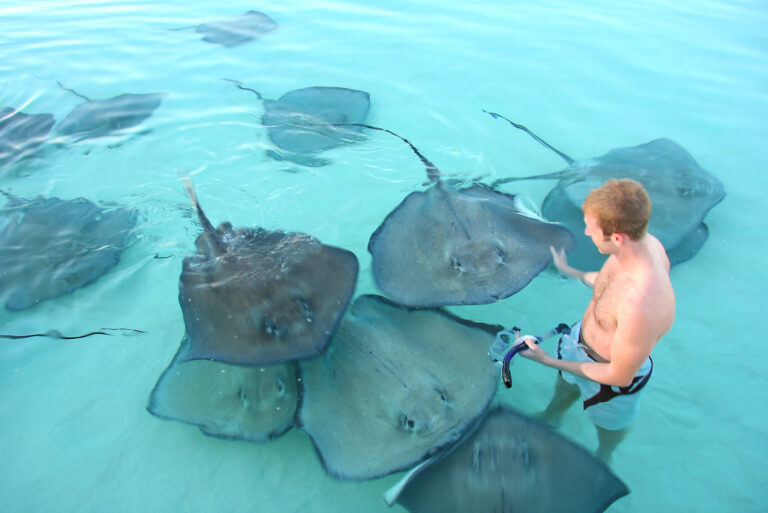Greek myths and legends entwine, weaving into Crete’s rich fabric of history.
Discover 10 must-visit sights on your next sojourn to this charming island.
If Crete were a person, she’d be warm, welcoming, generous in nature, and full of character. As Greece’s largest island and with its year-round sunshine, Crete welcomes visitors with open arms all year long. Besides her hospitable nature, the island is blessed with diverse landscapes, beaches galore, and enough rustic tavernas (local Greek restaurants or cafes) to keep you feeling truly nourished throughout your stay. From historical wonders and fantastic food stops to an under-the-radar beach, here are 10 must-visit places for your next adventure to Greece’s mystical island.
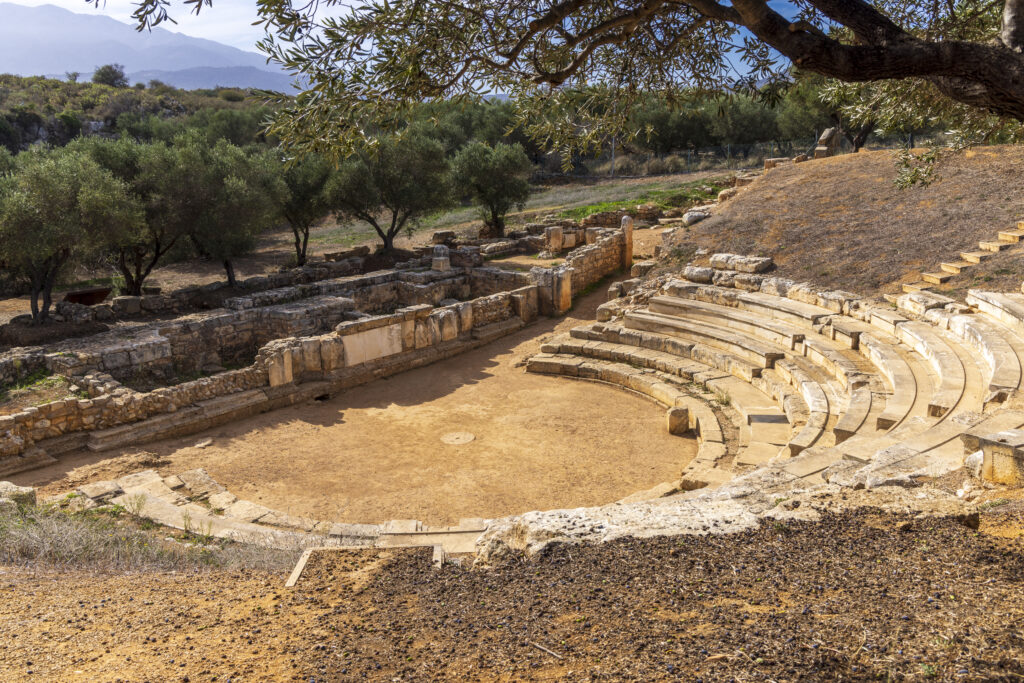
Ancient Ruins at Aptera
Located in Western Crete, set atop Paleokastro hill overlooking Souda Bay, is the ancient city of Aptera. Dating to the 7th century, this sprawling archaeological site offers a fascinating glimpse into Crete’s past. The name Aptera, meaning “without wings,” is believed to come from a Greek myth in which the Sirens (Greek mythological creatures who were half bird, half woman) lost a music competition to the Muses, and were left wingless. Excavations of the site have revealed the ruins of a 1.8 mile-long fortification wall, a fortified tower, and a city gate. The ancient city also features a Turkish fortress constructed in 1872, Roman cisterns, a Greek temple, and an amphitheatre. Discover Aptera’s ancient remnants during a guided tour and learn about Crete’s rich history and intriguing myths.
The Secret Cove of Seitan Limania
A 30-minute drive from Aptera, farther north on the island, is a fjord-like cove with a beautiful hidden beach. This idyllic spot beckons adventurous beach goers, for good reason: expect hairpin turns along the way, followed by a steep descent from the car park down a rugged path. Yet the journey there rewards twofold, with shimmering turquoise waters and its rugged canyon-like setting. This beach was previously used as an Ottoman naval base, and they named it Seitan Limani meaning “Devil’s Harbor,” due to its strong currents and steep mountainsides that made operations risky. Admire the natural scenery from the beach and keep an eye out for the elusive kri-kri (wild goats), too, which often freely wander around the area.
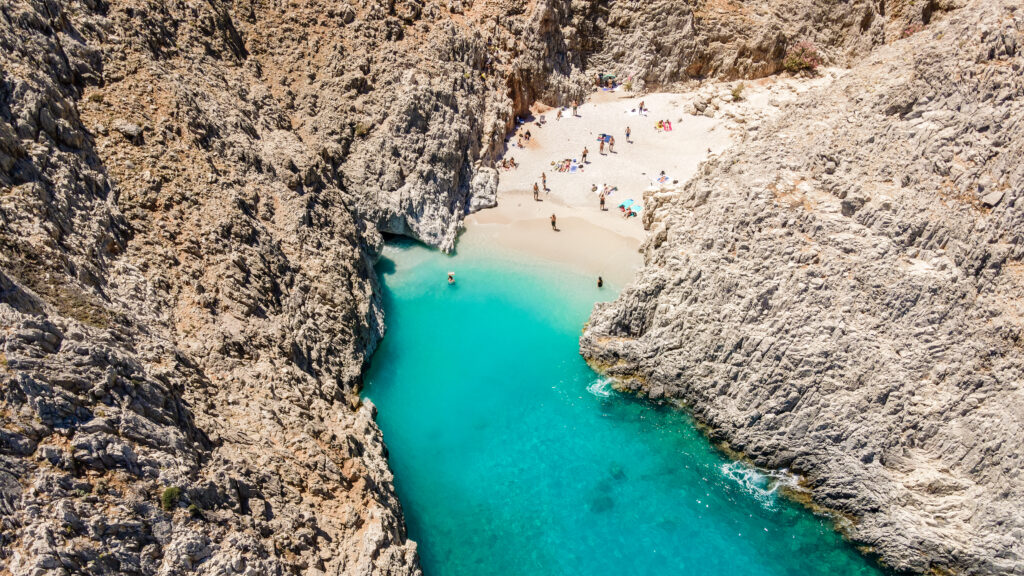
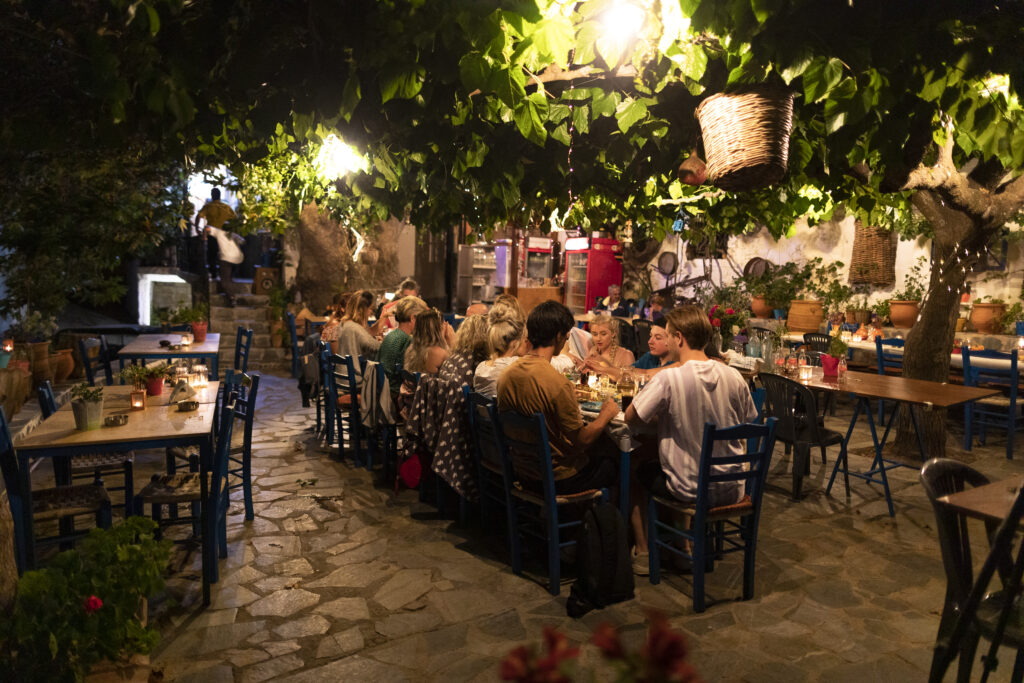
Rethymno’s Charming Old Town
To the east, along Crete’s northern coastline, is the charming city of Rethymno. Although it’s the island’s third-largest town, a slower pace of life unfolds here compared with other bigger cities like Chania and Heraklion. A visit to Rethymno’s quaint Old Town provides insight into the region’s rich historical tapestry, with Venetian and Ottoman influences noticeable around each corner. The 16th-century Venetian Fortrezza — designed to safeguard the Venetians from Ottoman invasions — majestically watches over the town, while the Neratze Mosque is a classic example of Ottoman architecture, with its minaret that reaches skywards. As a former Venetian monastery, this building was later converted into a mosque following the Ottoman conquest. After exploring the Old Town’s iconic historical gems, wander the labyrinth of narrow streets that lead to charming cafes and inviting tavernas.
Geological Wonders at Melidoni Cave
Travel 18 miles east of Rethymno and explore an underground world at Melidoni Cave. This natural, cathedral-like grotto features towering stalactites and stalagmites, and was a site of worship during the neolithic era. In October 1823, the cave also acted as refuge for 370 villagers and 30 soldiers from the Ottoman army. After a three-month siege, the Ottomans started to attack them, blocking the entrance, and setting the cave on fire. The villagers and soldiers tragically lost their lives.
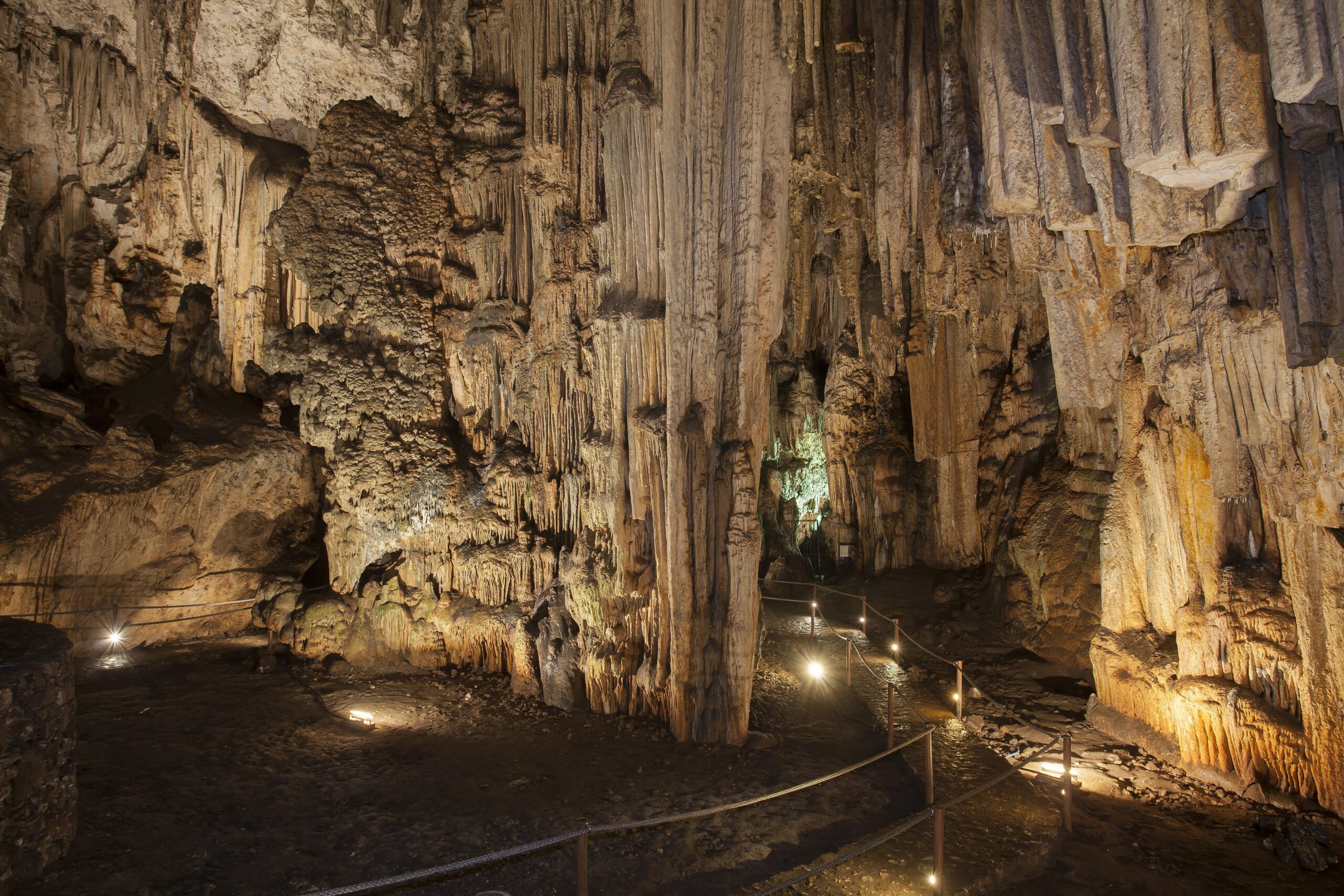
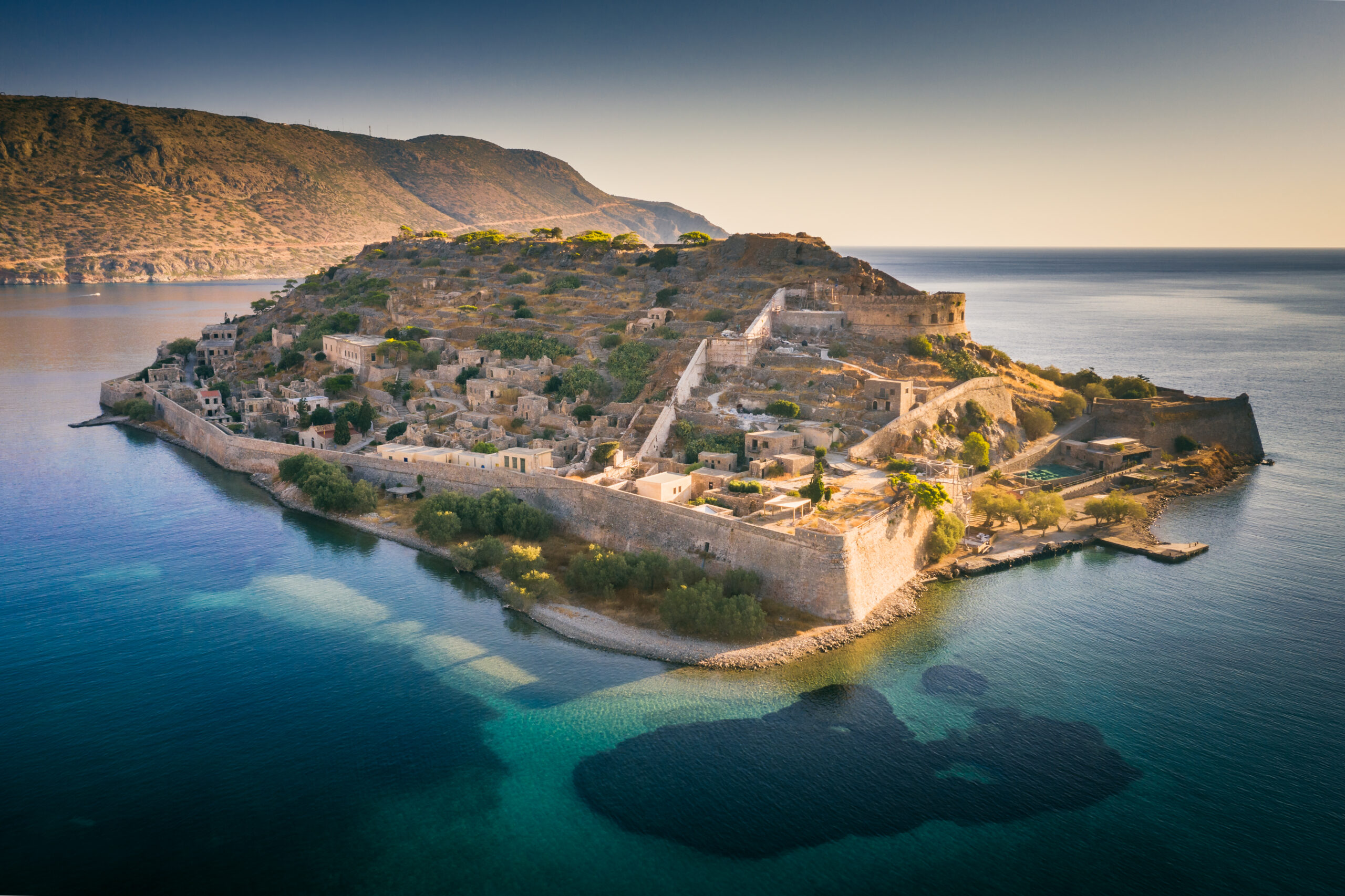
The History of Spinalonga Island
This teardrop-like, rocky island has a storied past, too. Over the centuries, Spinalonga Island has served as an acropolis, a Venetian fortress, an Ottoman refuge, and, until 1957, as a leprosy colony. During the latter of which, up to 1,000 Greeks with leprosy, also known as Hansen’s disease, were quarantined on the island where they lived in poor and squalid conditions. In 1936, Epaminondas Remoundakis, a young law student who had contracted leprosy, arrived on the island and devotedly fought for better medical care and living conditions. Explore the uninhabited island with Spinalonga Tours. Boats depart regularly from Plaka and Elounda.
The Raw Beauty of Samaria Gorge
Add outdoor adventure to your Greek sojourn with a scenic hike through the rugged, tree-lined Samaria Gorge. Located in Samaria National Park, along Crete’s western coast, this 10-mile-long gorge is one of Europe’s lengthiest canyons. Seasoned hikers can opt for the challenging five-to-seven-hour route: a downhill hike from Xyloskalo (Omalos) that ends in Agia Roumeli. Be sure to leave early, wear sunscreen and comfortable footwear, and have plenty of snacks and water (as there are no shops inside Samaria Gorge). Along the way, pass through Portes (also known as “the Iron Gates”) — the narrowest part of the gorge — and you’ll more than likely encounter kri-kri here, too. At the end of the trail, reward yourself with a refreshing sea swim, a picnic under the tree canopy, or a leisurely taverna lunch.
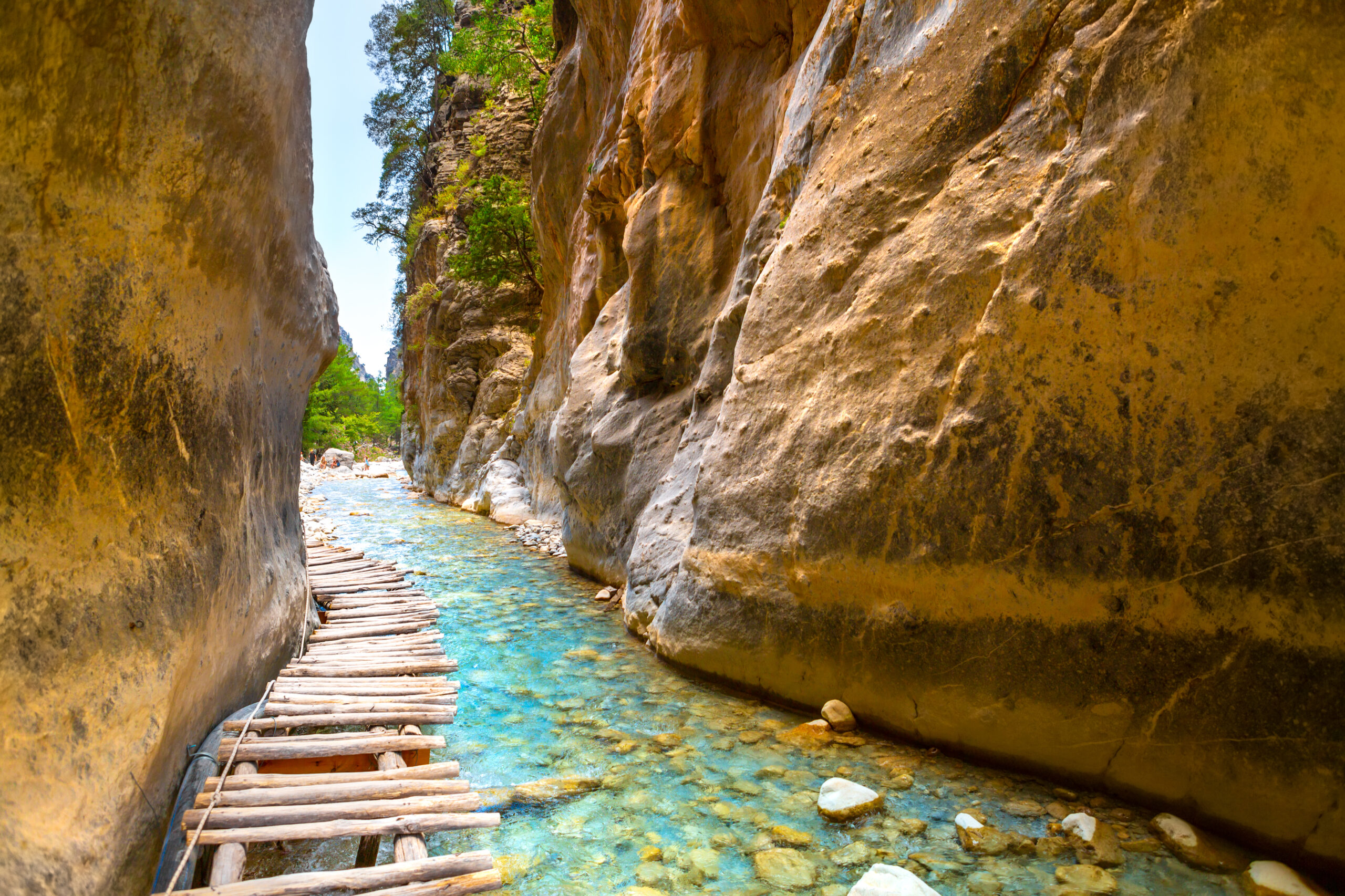

Soul-Nourishing Food at Dialiskari
Speaking of tavernas, Dialiskari, in southwestern Crete, is one that you’ll want at the top of your must-visit foodie list. This rustic, oceanfront taverna sits atop a rocky outlet overlooking the Libyan Sea. The journey there is an adventure: it can be reached only by foot (it’s a 4-mile hike from Sfakia along the E4 coastal trail) or by boat (a 30- to-40-minute ride from Loutro or Sfakia). On arrival, enjoy a locally sourced Greek feast with homemade bread and dishes lovingly made with family-grown vegetables, or opt for the slow-roasted lamb cooked in a wood-fire oven and reared by the owner’s brother in the mountains. Conclude with Sfakiani pita, a thin crepe-like dessert with a filling of cream cheese and a drizzle of honey.
Food From the Earth at Agreco
Not far from Rethymno is another stellar — and unique — taverna. Agreco Farm Taverna, open between April and October, blends a traditional Cretan restaurant experience with a 50-minute guided farm tour around the estate. After the farm tour — which starts at 6:30 p.m. — tuck into a set-menu dinner featuring 33 unique flavors: expect seasonal specialities such as stuffed courgette flowers, pickled wild artichokes, or quail. Wash down the delicious farm feast with a glass of raki (a traditional Cretan spirit).

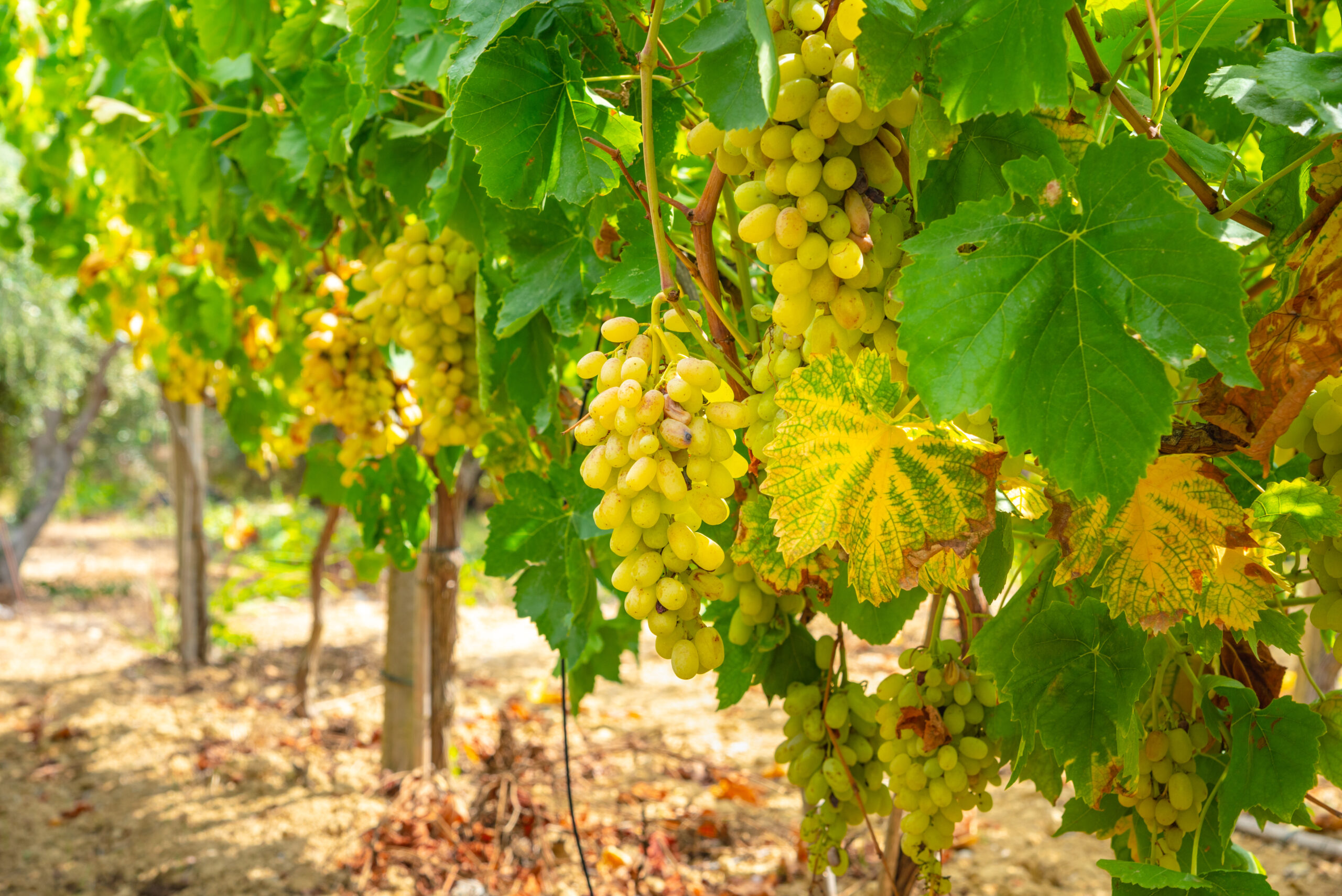
Discover Crete’s Viticulture
Heraklion, the capital of Crete, is home to more than two-thirds of the island’s vineyards and it produces 70 to 80 percent of the island’s wine. Enjoy both wining and dining while you explore Heraklion’s wine country on the north side of the island. The Lyrarakis Wines family winery, overlooking the Lassithi mountains, is renowned for preserving three ancient Cretan varietals: Dafni, Plyto, and Melissaki. Join their wine tasting tour with custom food pairings or enjoy their picnic experience under olive trees at the heart of the vineyard.
Set Sail to Dia Island
Shaped like a lizard when viewed from above, the uninhabited Dia Island is a Natura 2000 protected site and offers a relaxing escape off the coast of northern Crete. According to legend, Zeus, the King of the Gods, created Dia Island by transforming a giant lizard into stone after it attacked the island, thereby protecting his homeland. This rocky islet, just seven nautical miles from Heraklion, can be reached via a shared catamaran or sailing cruise with Green Cruises. It takes an hour to reach the island by boat, and on arrival you can enjoy plenty of sea adventures, including snorkeling, fishing, paddle boarding (weather permitting), or swimming in the glittering topaz-colored waters.
